Most households are making 1.6 trips to the grocery store each week. That means most of us are not very good at getting everything we need in one trip. For some individuals, it may work out better to grocery shop for half the week and then return for additional ingredients for the second half. But for other families, that second trip is not intentional and instead, the trip for the forgotten items or our brave attempt to get a healthy meal on the table when we don’t have a plan.
And then… there are the people that avoid grocery shopping like it’s the plague. For these individuals, the mere thought of grocery shopping creates anxiety and dread. But 89% of shoppers agree that eating at home is healthier and if we are going to do that, we have to buy food to prepare.

So how can we shave time off our grocery shopping excursions and make it as painless as possible? Today I have 9 tips to make your trips efficient, fluid, and pain-free, allowing you to grab the items you need without wasting your time.
01. Make a List in Advance and Follow It
How often do you grab items not on your list? Do you ever find yourself snagging an item from the store displays carefully placed and promoted with bright colors, ‘great’ prices and catchy phrases? What about those stands in the middle of the aisles that you have to drive your cart around?
If you want to save time, follow your list exactly.
To help yourself stay focused and efficient, organize your list according to your store’s footprint. Include a section for produce, dairy, poultry/fish/meat, frozen, grains/beans, etc. This will help you avoid running back down aisles when you forgot an item. By creating a “running list” that is placed in a visible spot in your kitchen (on the fridge, bulletin board, chalkboard), family members can write down what is needed throughout the week so that items that need to be restocked are not forgotten during your weekly grocery trip.
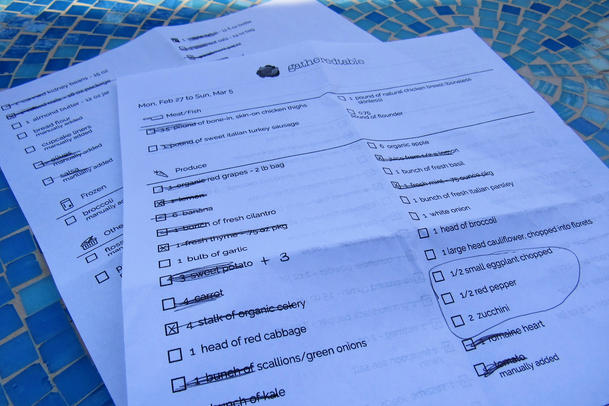
According to Food Marketing Institute (2015 survey), about 25% of Millennials and Gen Xers still do not make a grocery list. While 75% of us are, make sure to recommit to following it closely if you value your time and money.
02. Shop During “Off Hours”
This is MY FAVORITE tip! Crowded stores add stress, anxiety and distractions- this leads to taking more time weaving around others, waiting at the specialty counters, standing in line to check out. And when stressed, it is easier to overlook or forget items, especially when you are distracted by trying to make it down the aisle crowded with people.
When I walk in during “off hours,” the lines are shorter, aisles are less crowded and store associates are more available and helpful. For most grocery stores and supermarkets the less busy times tend to be very early in the morning and late in the evenings. Weekends and directly after work tend to be incredibly busy.
The smart way to determine the best times to shop is to simply ask a store associate. I usually do this while checking out. I found at my local Trader Joe’s, Sundays are busier than Saturdays simply by engaging in conversation. A few years ago, I found that Friday nights at my local Harris Teeter was usually pretty sparse and a great time for a smooth and efficient grocery shopping experience. You can also test out your assumptions by trying a few different times.
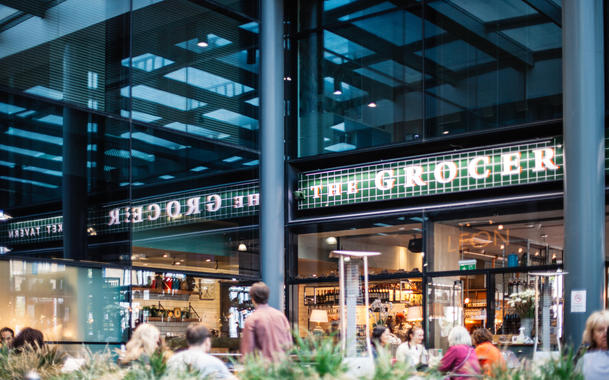
03. Don’t Shop When You Are Hungry
Food looks more appealing when we are hungry. It is a simple fact. You are less likely to make impulse buys and grab an item on a display if your tummy is not grumbling. Ideally, shop after eating a balanced meal, but if needed eat a small, healthy snack before your grocery shopping trip. Once again, the more you are conned to stop for items not on your list, the more time (and money!) you will spend.
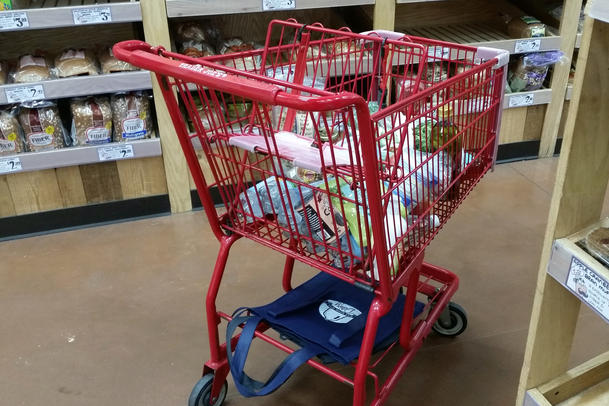
04. Review the Sales Flyer BEFORE You Arrive
Often when I walk into the store, I watch individuals grab the sales flyer and a cart as they walk in and with their head down studying the flyer, they slowly make their way to the first aisle. The flyer is not organized in the same way as the store so if you decide to make food or meal decisions on the fly, you will run all over the store wasting your precious time looking for the “deals” (and not all of them are deals, anyway!). The good news is that each store puts the sales flyer on their website so you can access it all week, at any time of the day, and plan meals around what you find on sale.
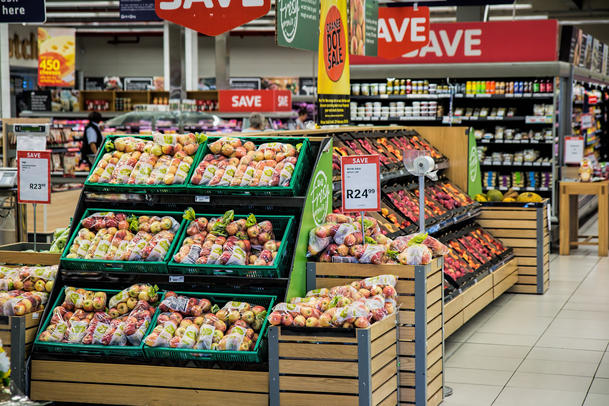
05. Avoid Shopping at Multiple Stores
There are few things that can waste our time more than going from store to store to get certain items. Some people may have the time and energy to do this in order to save money, but they certainly aren’t saving their time!!
If your time is more valuable, but you still find that there are 2 stores you prefer to shop at, consider the possibility of swapping stores each week and purchase enough for 2 weeks instead of 1. OR, if you go to one store every week for amazing produce and another for great deals on grains, beans, fresh poultry, etc, then go to the store for produce weekly and try to make a trip to the other place only every other week.
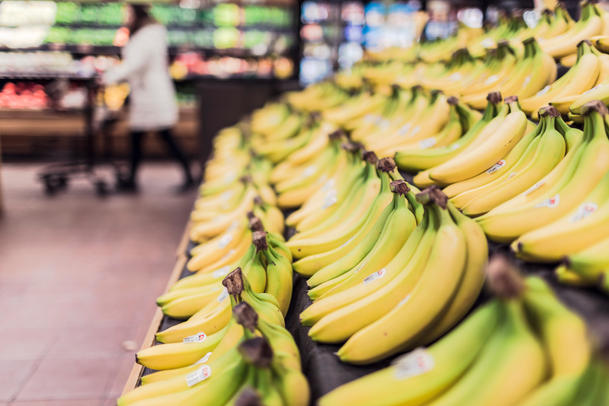
06. Have a Meal Plan!!!
Grocery lists are easier to make if you have a meal plan scheduled. While there are a lot of items that are purchased weekly without fail, there is nothing as frustrating as beginning to make a meal and finding you don’t have an ingredient. Make sure you have checked your pantry and know what is in stock.
For some meal planning assistance, check out my post on PlateJoy OR One Powerful Key that Will Simplify the Way You Meal Plan
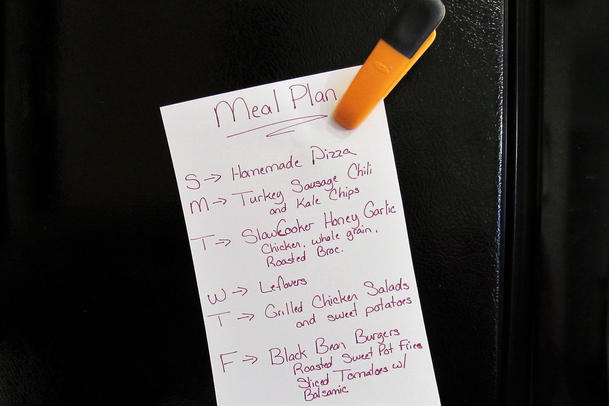
07. Give Yourself a Realistic Time Frame
Don’t underestimate how long it really takes to grocery shop. Begin by setting a goal time frame and after several trips, determine whether this is realistic or needs to be re-evaluated. Make it a challenge or game to get it done in the amount of time you have set. Don’t forget to add in how long it will take to get to the store and drive back home.
Some surveys have shown it takes around 45 minutes to get in and out of a store, but there are several factors like the size of the store and the actual footprint that play a huge role in the length of time it takes to shop. For instances, grocery shopping at my local Aldi or Trader Joe’s, which primarily only has their store brand items is much shorter than a supercenter or large supermarket which could carry a dozen brands for one item.
Consider planning your day so that you have an engagement or appointment set an hour or 2 later so that you must get your shopping completed and put away (and prepped!) before you move on to your next event. I often find that when I only have a limited amount of time, I move faster and more efficient AND, if you have your list planned and organized, it is truly possible to get it done without forgetting items.

08. Leave Kids at Home When You Can
Now this is easier for some than others, but kids tremendously slow down grocery shopping. (I KNOW!!) They often ask for more items, put items in the cart without asking and require a lot of attention and sometimes even discipline during the grocery trip. They can also divert our attention leading to forgotten items or picking up the wrong stuff.
Can you kid swap with a friend so that you each have a time to grocery shop? Maybe your spouse can take them to the park while you head to the store? This may not always work out, but brainstorm some ideas that will work for you and your family.

IMPORTANT NOTE: I do believe it is important to involve our kids in food and shopping experiences and in fact, this creates a lot of interest and curiosity around foods and trying unfamiliar foods. But, decide when you want to invite your kids along and do it intentionally, as a learning and exploratory experience. Plan a trip to the farmer’s market 1 time per month. Take a field trip to a local farm for a play date with friends. Remember it is CRUCIAL to create experiences for our kids to interact, touch, smell and taste a variety of whole foods, BUT, if you are trying to get in/out of the store, then you may want to leave them at home.
09. My One Last Tip…
Shop with a smile. Even if grocery shopping is a task you detest, your attitude can change your entire experience. If you decide to shop with a smile, research shows that the simple act can release neuropeptides that help fight off stress and relax your body. YOU choose when you smile and how often. Find simple things to smile about. Smile as you walk past another individual. AND, take advantage of opportunities to make another person smile…at the checkout, at the fish counter, while waiting to grab some bell peppers in the produce department.
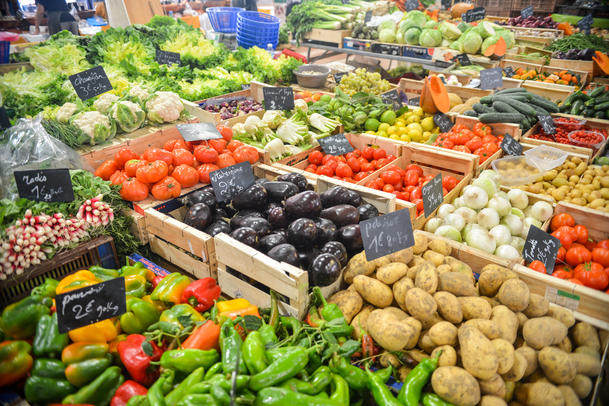
Grocery shopping is an important part of getting healthy meals on the family dinner table, making smart snacks and eating more whole foods. While it does require some time, planning and intentionality, it doesn’t need to become long, arduous or despised.
How can you save yourself some time and energy? How could you shop smarter and more efficiently? YOU are your most valuable asset to your family. Take some smart steps today to shave time from doing the have-to tasks so you can add more time to the want-to tasks. It’s a WIN-WIN!
REFERENCES
Hartman Group, US Grocery Shopping Trends 2016
Food and Marketing Institute, survey, 2015
